The Bottling Process at Monte Bello Winery
Blog Post
Have you ever wondered how a winery like Ridge manages its bottling process in a way that maintains quality and consistency? We go in depth with the answers below to paint a detailed picture of how and why we bottle our wine the way we do.
1. How did the bottling process at Ridge find its home above the Monte Bello winery?
From the beginning, the founders bottled on site everything that they produced. In the early years, much of that work was manually done–emptying a barrel at a time. Everything was hand-filled, manually-corked and capsuled, and labels were hand-cranked through a glue roller and then applied to the bottles. With all that manual labor involved, about four barrels of wine was probably the most they would bottle in a day. During the earliest vintages, they were not making much wine so that approach suited them just fine.
As Ridge entered the 1970’s, and moved the winemaking operation another mile up to 18100 Monte Bello Road they had more space to produce wine in the renovated Monte Bello Winery. The additional vineyard land increased the amount of tonnage coming in from the estate. Ridge maintained their original winery at 17100 Monte Bello Road for bottling, cased goods storage, and sales. This required emptying barrels into a tank on a flatbed truck and making the mile drive down the mountain to bottle. Ridge had plans for a new bottling and storage area at the winery compound. They completed the construction and bottling line installation in 1980, in what we call the Almacén Building. It was mostly automated, using a top-of-the-line German-built filler, a “Super-Gloria” corker coming from Italy, and a capsule spinner from Germany. Another German machine, the Krones automated glue-on labeler could roll a full wrap-around label onto the bottle at a great speed.
This greatly enhanced Ridge’s ability to control the final point of wine quality and assure great aging potential of the finished bottles. That bottling line remained intact until it was time to retire and upgrade to newer and more sophisticated bottling equipment. This was completed in 2001 as the 1999 vintage was ready to be bottled. We installed an Italian-built MBF Synchrofill filler configured as a monoblock with a corker. This machine is still in use today, giving us the best control in protecting the wine from oxygen during filling. The monoblock guides bottles from the filler spout immediately over to the corker so there is no time delay or chance for oxygen to reach the wine.
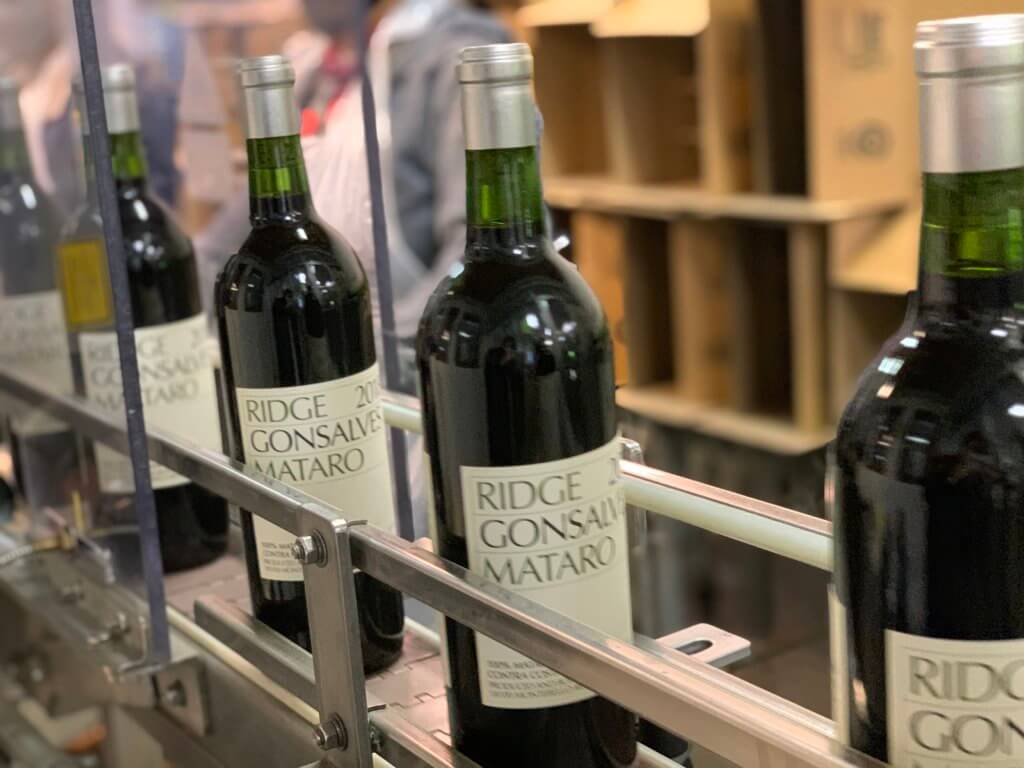
The other upgrade was the transition to pressure-sensitive labels rather than wet glue applied wraparound of the Krones system. With pressure-sensitive, the labels are printed onto paper that already has a strong adhesive. As filled bottles roll through the labeler, the front and back labels are dispensed and grabbed by the bottles and rolled on with great precision to placement. Most wineries use this labeling technology today. Overall, this bottling line is extremely gentle on the wine and operates at an efficient speed. We average about 60 bottles a minute, though the machinery can reach as much a 100 per minute. We have often felt it is best for the wines’ gentle handling to oversize equipment and under-utilize. There is also less wear and tear on the equipment. We should be able to get 50+ years of life out of this bottling line.
2. Who are the Ridge team members that work on the bottling line and what are their responsibilities?
We have a very dedicated production team that takes care of maintaining the bottling equipment to assure smooth bottling. Ten individuals carry out various tasks as part of the bottling operation. One person feeds glass onto the line and another will sort the bottles before the filler. Once the filled and corked bottles leave the monoblock, we have someone hand-applying the capsules.
The two key individuals setting up the bottling line and maintaining it, are present each day to visually inspect the equipment, assure sanitation, and that all of the equipment is operating correctly. They have oversight for quality control. Two more people are taking the finished bottles and repacking them into wine cases. Another person seals the cases and stacks them onto wooden pallets. Our warehouse manager is using the forklift to pull out full pallets and bring forward empty bottles to the starting point of the line.
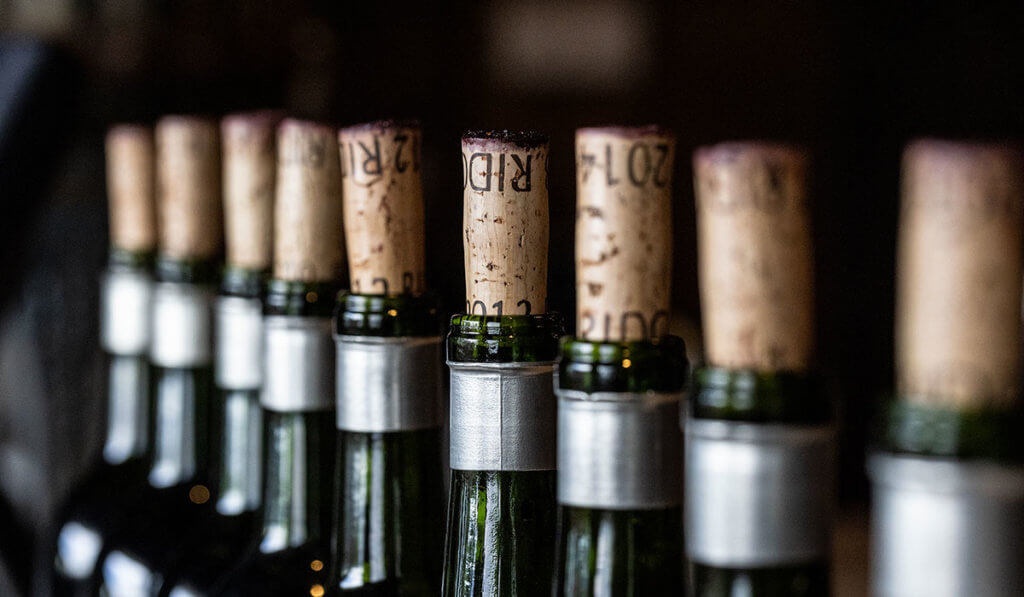
Our truck driver (who also brings us grapes during harvest) takes filled cased-goods to our warehouse in Silicon Valley and delivers us empty glass on the return trip back to the Almacén. We used to have all of our empty glass delivered directly to the winery, but Monte Bello Road was too difficult to navigate for many truck drivers (who sometimes were making that drive for the first time) and there were so many times that we would find a lot of tipped over pallets and broken glass. Our own driver knows the road very well and can do the driving in the off-hours to avoid cyclists and heavy neighborhood traffic.
In total, everyone working on the line has been there for many years: the key individuals have easily spent twenty years or more on the bottling line operation.
3. What are the steps of the bottling line and how long does each step take?
There are ten steps involved in bottling wine. Not counted is the preparation involved in getting wine from barrel to tank and ready to bottle. That alone takes several weeks of planning and cellar labor. Once the wine is staged in a tank above the bottling line, it is gravity fed to the filler.
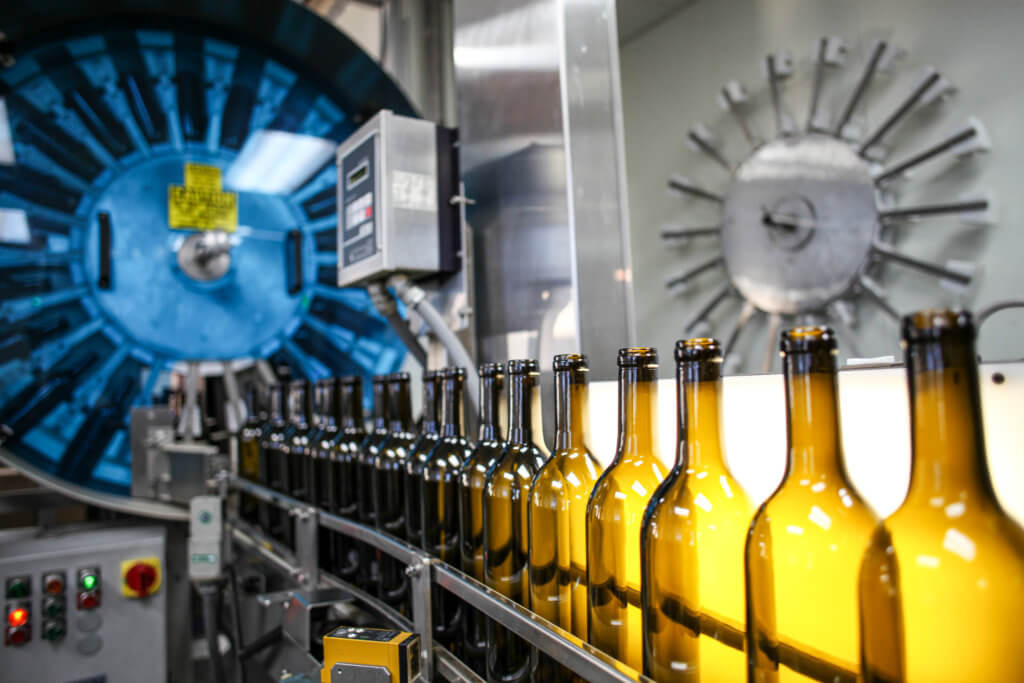
The first bottling step is feeding empty glass onto the infeed conveyer. The bottles are swept up onto an orbital bottle de-duster and sparger. As the bottles move on this wheel, going upside down, vacuum and compressed air blows out any cardboard dust. Heavy nitrogen gas is injected during the final seconds as the bottles return to the infeed conveyor.
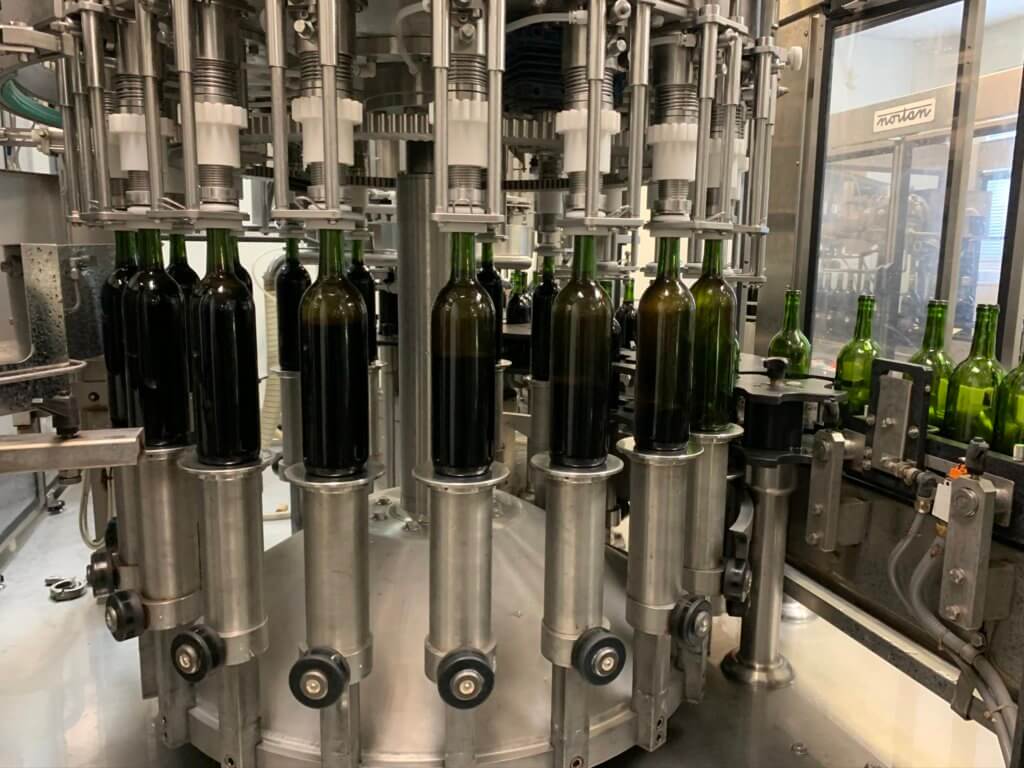
The bottles travel in front of a light box so that an inspector can pull out bottles that have visual or structural flaws. A screw feed and star gears guide the bottles onto the MBF Synchrofill’s filler pedestals. As the bottles are lifted towards the filler spout, the spouts open and wine enters the bottle. Additional nitrogen injection occurs to fully displace oxygen and keep the wine protected.
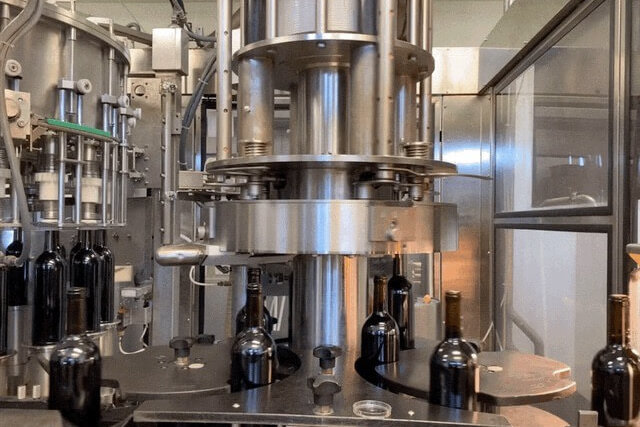
Bottles leave their pedestal where another star gears guide them onto the corker’s pedestals. Corks are loaded into a hopper that is located on the mezzanine above the bottling line. The corks vibrate with a vacuum applied to remove dust and debris. They fall into the corker’s hopper where they drop into one of four jaws of the corker. These jaws move in and out to compress the cork as a plunger pushes it into the neck of the bottle while vacuum is applied to the headspace inside the bottle’s neck. Our machine compresses corks twice before the plunger inserts them into the bottles. This helps with pulling out additional cork dust that might be trapped inside the pores of the corks.
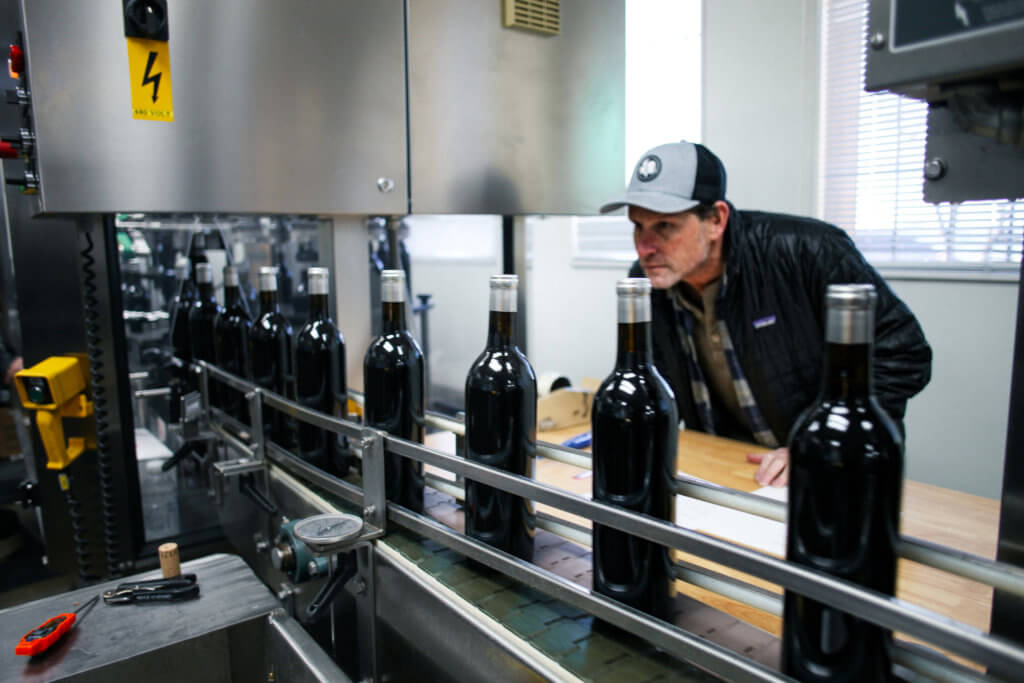
Once the corked bottles leave the monoblock, and the electronic eye checks for a cork, a person will be standing there to hand-apply a capsule. The bottles travel onto the capsules that spins down the tin to form a tight seal covering the cork and neck. Our capsule is shorter than standard so that the last half-inch of the cork will reveal the vintage of the Ridge wine being bottled. That has been our format for decades as many consumers would like to be able to see the condition of the cork, how much wine has soaked up, and if there is ullage happening.
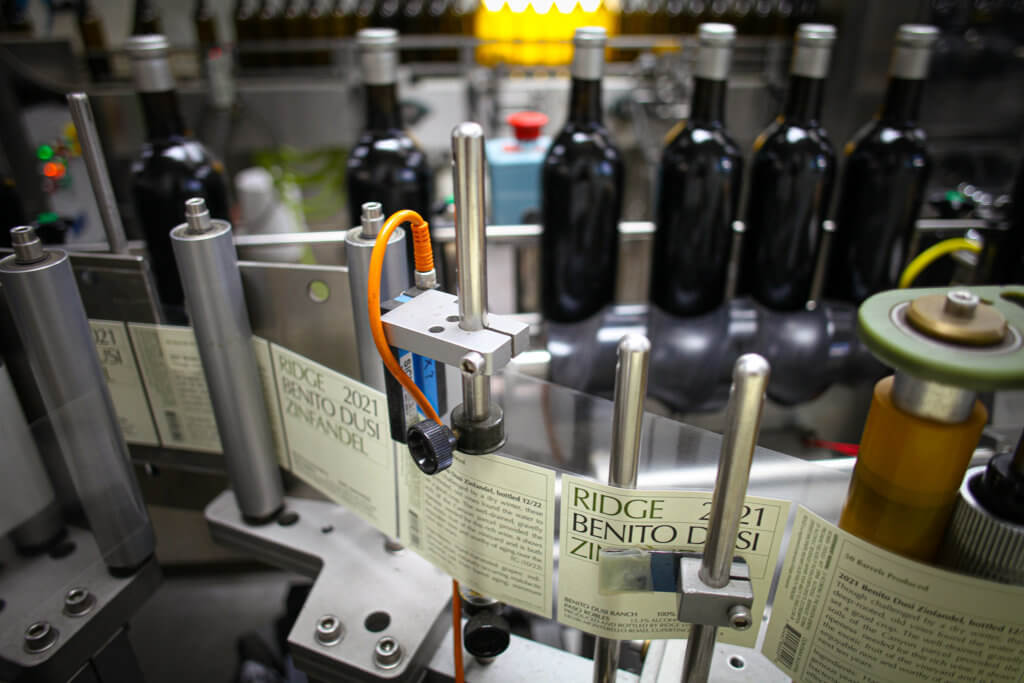
Once out of the capsuler, it makes it to the labeler with pressure sensitive labels applied. Then over to the pack off table, where a laser engraves information onto the lower side of the bottles. This traceability information provides the cork lot used along with date and time of filling should there ever be an issue with quality. We can look back at our bottling history and track quality issues.
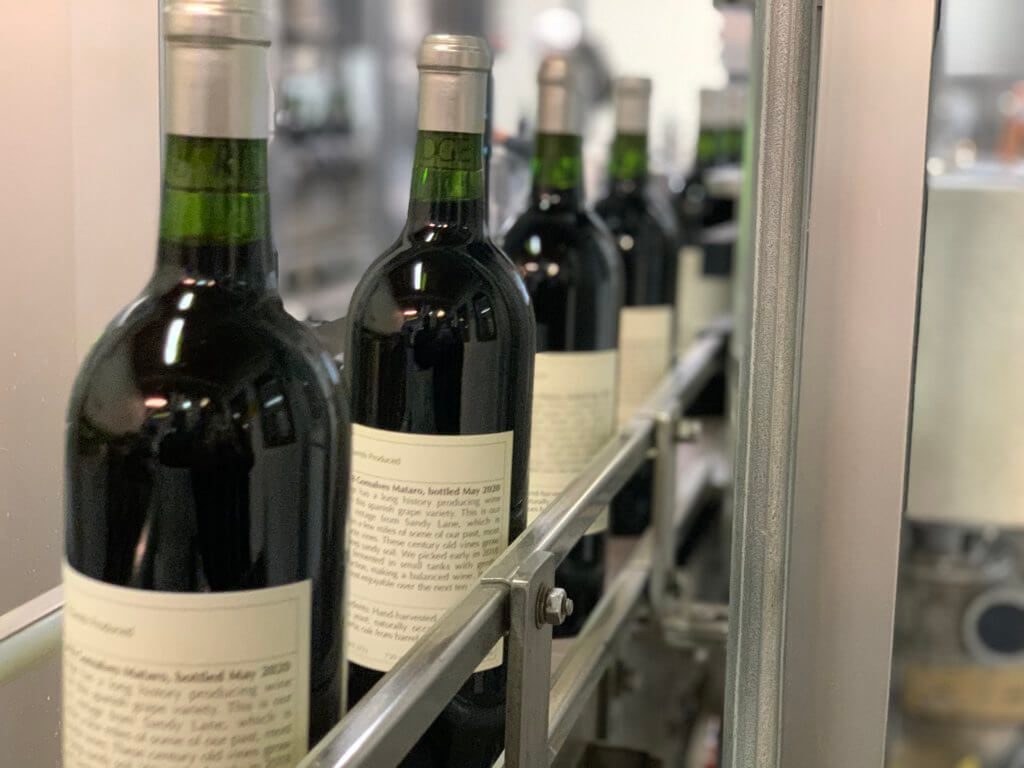
Next, the bottles are packed neck-up inside a wine case so that the cork remains dry and can fully expand. It takes several days for the cork to adjust to having been compressed inside the neck of a bottle. The cases are palletized with bottles positioned neck-up. Once transferred to our main warehouse for storage, pallets are flipped from bottom-to-top; this then correctly sets the bottle position to neck-down so the corks will be wet for best structural integrity. This is best for long-term aging of our wines.
4. Are there any different processes for different wines?
The only different process is with filling large format (6L) bottles. They are physically too large to go through our filler and the large diameter corks will not fit our automated corker. Those bottles are hand-filled and a special manual corker that can handle those wide corks.
The other difference is with bottle type and capacity. Tenths require different screw feeds and star gears than fifths. Burgundy bottles are different than claret. Each require their own set of line change parts to guide them through smoothly. If a bottle is too large, it might hang up in the sparger, not get centered on the filler pedestals for proper filling, or not fit in the corker. It would require all new change parts to allow that bottle to fit.”
5. How does our bottling process speak to our mission of transparency and pre-industrial winemaking? How does it compare to other wineries?
Every winery is going to have its own unique way of bottling. Many large wineries have centralized bottling operations where wine is shipped via tanker truck to a common facility. There the bottling plant can run 24 hrs a day, 7 days a week while bottling multiple brands of the conglomerate.
On the other end, for very small boutique operations, the cost to purchase and install their own line is far too great an investment. There are mobile bottling line companies that will come to their winery and run their products through. Typically, a small winery like that will bring the mobile line up at one time and bottle everything they have ready for that vintage.
Ridge has always held the philosophy of controlling every aspect from vine to bottle, with a discipline of a first growth chateau. Having that level of production control gives us bottled wines that were made with the utmost of care, relying on our pre-industrial winemaking approach. That is signified in an important statement on the front label “Grown, Produced, and Bottled by Ridge Vineyards.”
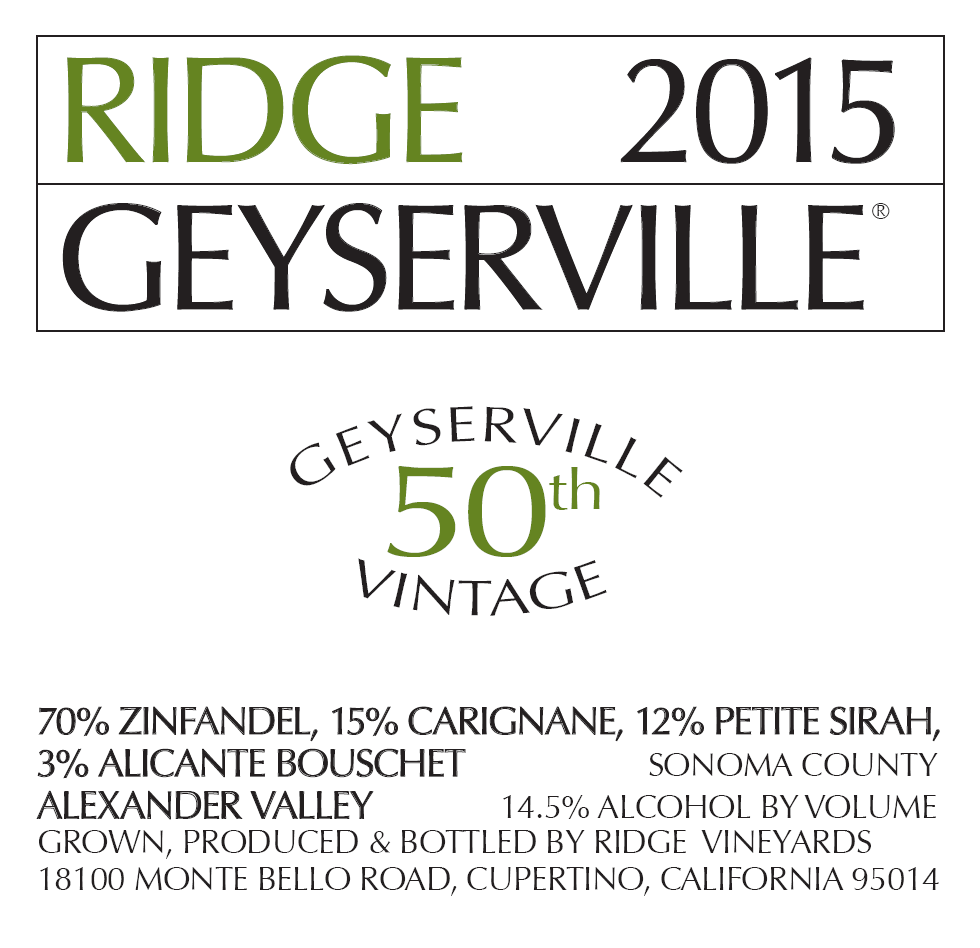
That indicates we grew the grapes, harvested, made the wine, and bottled it at either Ridge’s Monte Bello Winery or Lytton Springs Winery.
Wait!
In order to qualify for user related discounts, you must log in before proceeding with checkout. Click the button below to log in and receive these benefits, or close the window to continue.
Log In